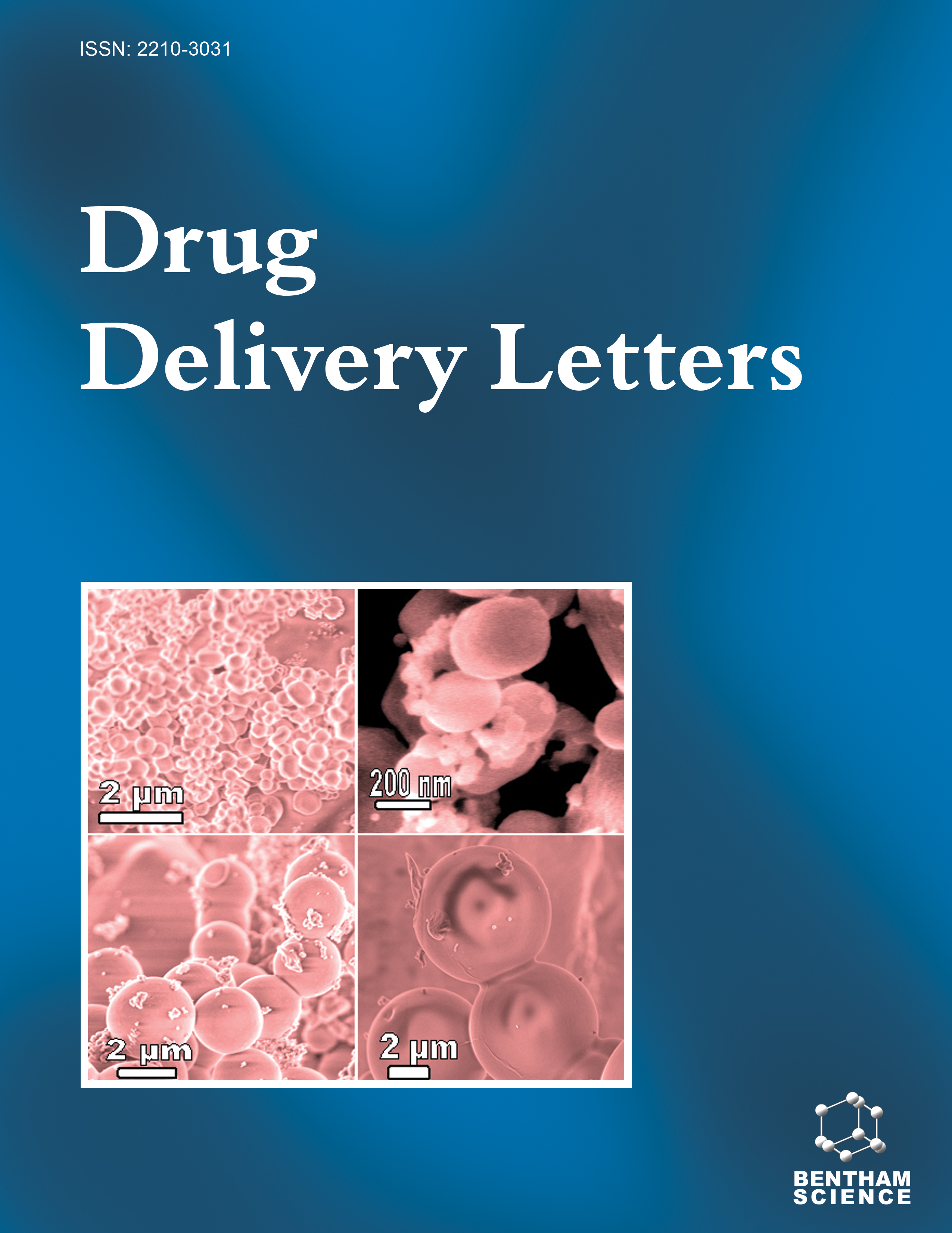- Home
- A-Z Publications
- Drug Delivery Letters
- Previous Issues
- Volume 14, Issue 1, 2024
Drug Delivery Letters - Volume 14, Issue 1, 2024
Volume 14, Issue 1, 2024
-
-
Nanoemulsion Based Supramolecular Drug Delivery Systems for Therapeutic Management of Fungal Infections
More LessAuthors: Surjeet K. Sethi, Honey Goel and Viney ChawlaFungal infections are one of the significant causes of death worldwide. Antifungal agents are associated with several side effects and toxicities while treating these infections. To overcome these physicochemical and pharmacokinetic side effects of antifungal agents, supramolecular drug delivery systems can be employed. The emulsion-based supramolecular assemblies, i.e., microemulsion and nanoemulsion, can be functionalize Read More
-
-
-
Recent Advances in Combating Acne with Novel Drug Delivery Systems: A Review
More LessAuthors: Melroy D'Sa, Shreyash S. Mahadik, Nrupesh Patel and Sahaya NadarAcne vulgaris is an inflammatory disorder of the skin that occurs when hair follicles get clogged with sebum and dead skin cells resulting in pustules, papules, or nodules. This condition affects a large number of people throughout the world. Over time, various conventional therapies like topical, systemic and hormonal treatments have been prescribed by doctors to patients for managing acne. Amongst these, topical ther Read More
-
-
-
Microencapsulation of Doxorubicin Using Chitosan
More LessIntroduction: For some medical treatments associated with cancer, the invasion of organs is required, which must be done in a totally controlled way to obtain the expected results in the treatment. Today, most medical treatments make use of invasive therapies to combat the affected cancer tissues. Acting in this way also destroys those tissues not affected by the generation of tumor centers that confront the cancer tumor ce Read More
-
-
-
Formulation and Evaluation of Ion-Triggered In situ gel for Effective Ocular Delivery of Ciprofloxacin HCl and Olopatadine HCl in Combination
More LessAuthors: Darakhshan A. Shaikh and Munira M. MominBackground: Ocular in situ gels (ISG) are an adequate substitute to overcome the pitfalls of conventional eye drops as they acquaintance the advantages of solutions, including accuracy, dosing frequency, and ease of administration with prolonged contact with the ocular membrane. Objective: The present investigation aims to develop the ion-triggered in situ gel (ITISG) system for the convenient administration of Cipr Read More
-
-
-
Pharmacokinetic and Pharmacodynamic Evaluation of Telmisartan-loaded Novel Curcumin-tagged Solid Nanodispersion for the Treatment of Diabetic Nephropathy in an Animal Model
More LessAuthors: Aruna Rawat, Vikas Jhawat, Samrat Chauhan and Rohit DuttAims: This study aimed to evaluate the therapeutic efficacy of telmisartan-loaded novel curcumin-tagged solid nanodispersion in streptozotocin-nicotinamide-induced diabetic nephropathy in Wistar rats. Objectives: The objective of this study was to perform a comprehensive pharmacokinetic and pharmacodynamic evaluation of a novel curcumin-tagged solid nanodispersion loaded with telmisartan, with the aim of assessing its Read More
-
-
-
Intranasal Delivery of Perillyl Alcohol (NEO100) as a New Treatment Strategy for Glioma
More LessAuthors: Axel H. Schönthal, Julio Thome, Daniela C. de Lima, Thomas C. Chen and Clovis O. da FonsecaBackground: Perillyl alcohol (POH) is a naturally occurring monoterpene that is being developed as an intranasally delivered agent for the treatment of brain-localized malignancies. Clinical trials with glioma patients in Brazil have yielded preliminary evidence that this approach might be able to achieve therapeutic activity and result in prolonged survival of patients. Methods: NEO100, a highly pure, current good manufacturing pr Read More
-
-
-
Efficiency of a Lyophilizate for Dry Powder Inhalation System for Drug Delivery of Ghrelin in Monkeys
More LessAuthors: Tomomi Akita, Kahori Miyamoto and Chikamasa YamashitaBackground: A lyophilizate for dry powder inhalation (LDPI) system is unique in that its formulation, a lyophilized cake, is aerosolized just upon inhalation by convection flow of air. An LDPI system may be advantageous, especially for biopharmaceutics, such as proteins and peptides, because formulations can be manufactured without high temperature and shear stress. It was already reported that formulations of peptides use Read More
-
Volumes & issues
Most Read This Month
Article
content/journals/ddl
Journal
10
5
false
en


